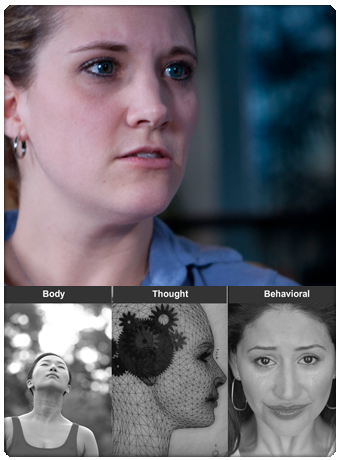
Now that you have helped your clients become aware of and identify feelings, you will help your clients explore their feelings in a more detailed way -- specifically what their body feels like, what they are thinking and what they tend to do when they have a certain feeling. This analysis is the first step in helping your clients identify strategies that will help them target problematic aspects of their emotional experience as well as identify places of strength.
Each of your clients will differ from one another in the ease of intervention. Begin with the channel in which each client is most proficient. You can then assist each one in developing skills in other channels. These modulation skills are designed to improve the client's ability to manage emotion more positively and effectively.
Use examples from Feelings Monitoring Forms to identify what the clients experience or do in each channel. Note how on the Three Channels of Emotion Worksheet, the three channels are connected in a circle, so that if symptoms are triggered in any one channel, they activate symptoms in the other channels. For example, a person may begin worrying and thinking “I can’t handle this,” (thought) and then become tense and shaky (body), and avoid or withdraw (behavior) In another situation, they may think someone has deliberately hurt them (angry thought), then experience tight muscles and adrenalin (body), and react by yelling at the person (behavior).








